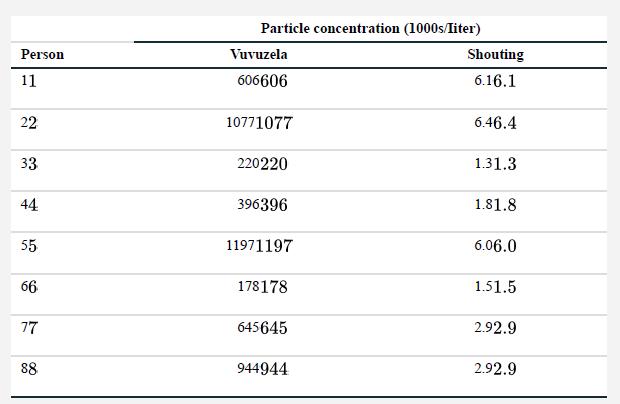The vuvuzela captured international attention during the 2010 World Cup in South Africa. In its modern incarnation,
Question:
The vuvuzela captured international attention during the 2010 World Cup in South Africa. In its modern incarnation, the vuvuzela is a plastic horn, about 65 cm long, that can produce a sound loud enough to cause permanent hearing damage. Blowing a vuvuzela requires a fair amount of air pressure, and Lai et al. (2011) were concerned that vuvuzela use by anyone carrying a pathogen would cause airborne contagions to be spread broadly through a crowd. They tested this idea with an experiment that compared the concentration of aerosol droplets or particles produced by people blowing vuvuzelas to that produced by the same people shouting instead. The data, measured as thousands of particles per liter, for eight individuals are given in the table below.

a. Take the log transformation of each value before finding differences. Then calculate a 95% confidence interval for the mean difference in log particle concentration between vuvuzelas and shouting.
b. Carry out an appropriate test for a mean difference in log particle concentration between the two forms of cheering.
Step by Step Answer:

The Analysis Of Biological Data
ISBN: 9781319226237
3rd Edition
Authors: Michael C. Whitlock, Dolph Schluter





